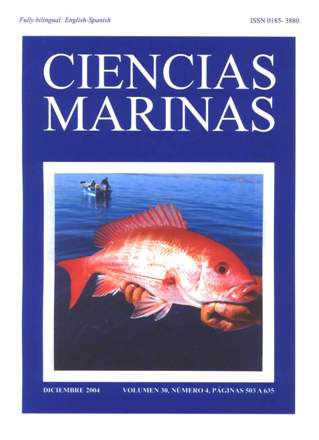Luteinizing hormone plasma levels in male European sea bass (Dicentrarchus labrax L.) feeding diets with different fatty acid composition
Main Article Content
Abstract
This work analyzes the plasma level variations of luteinizing hormone (LH) during the reproductive cycle and the percentage of spermiating European sea bass (Dicentrarchus labrax L.) males fed diets containing different percentages of lipids. The control group was fed with a natural diet consisting of trash fish (Boops boops L.). Two experimental groups were fed with pelleted diets containing different amounts of lipids: one group was fed with a commercially available diet with 10% lipid content (called group 10%), and another group was fed with this base diet enriched to a 22% lipid content using refined fish oil enriched in n-3 fatty acids (called group 22%). The control group exhibited the highest percentages of spermiating males, with values close to 100% from December to March. This good reproductive performance was associated with the highest LH plasma levels, which increased from November to February. In group 10%, the percentage of spermiating males was higher than 75% only between January and March, and plasma levels of LH were low during the reproductive season and significantly lower in February than in the control group. Group 22% also exhibited lower percentages of spermiating males than the control group, but higher than those observed in group 10%; LH plasma levels in this group were significantly lower in December than those observed for the control group. Differences in LH plasma levels between groups are not clearly associated with differences in the fatty acid composition of the diets. These results suggest that dietary fatty acids do not affect LH plasma levels in male European sea bass as strongly as previously reported in females.
Downloads
Article Details

This work is licensed under a Creative Commons Attribution 4.0 International License.
This is an open access article distributed under a Creative Commons Attribution 4.0 License, which allows you to share and adapt the work, as long as you give appropriate credit to the original author(s) and the source, provide a link to the Creative Commons license, and indicate if changes were made. Figures, tables and other elements in the article are included in the article’s CC BY 4.0 license, unless otherwise indicated. The journal title is protected by copyrights and not subject to this license. Full license deed can be viewed here.

